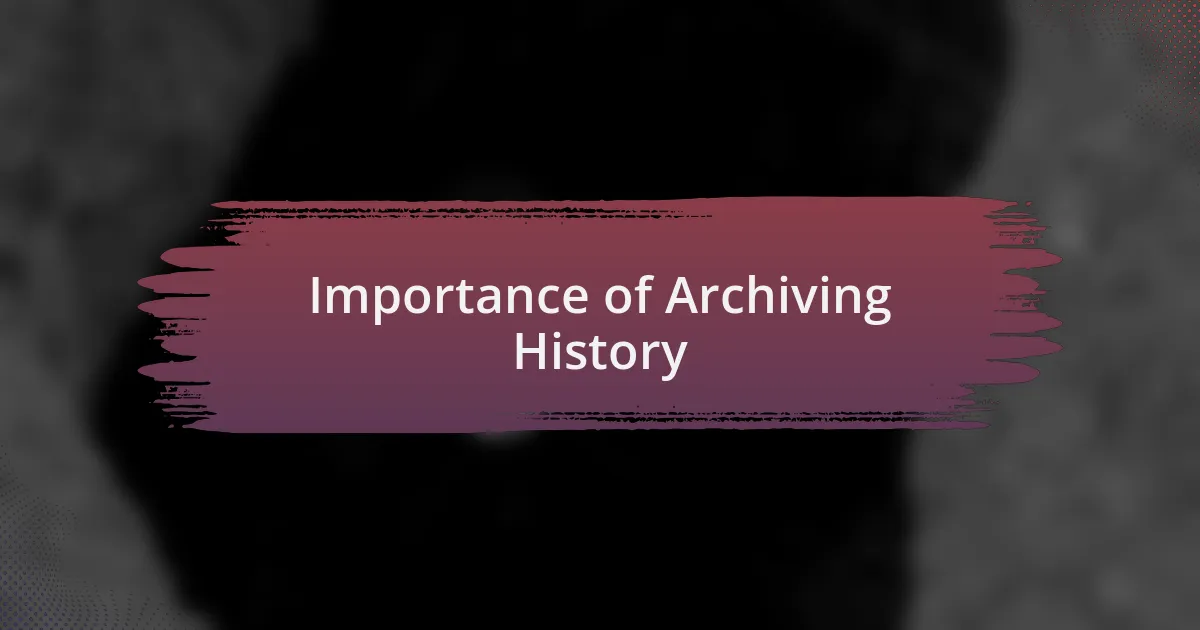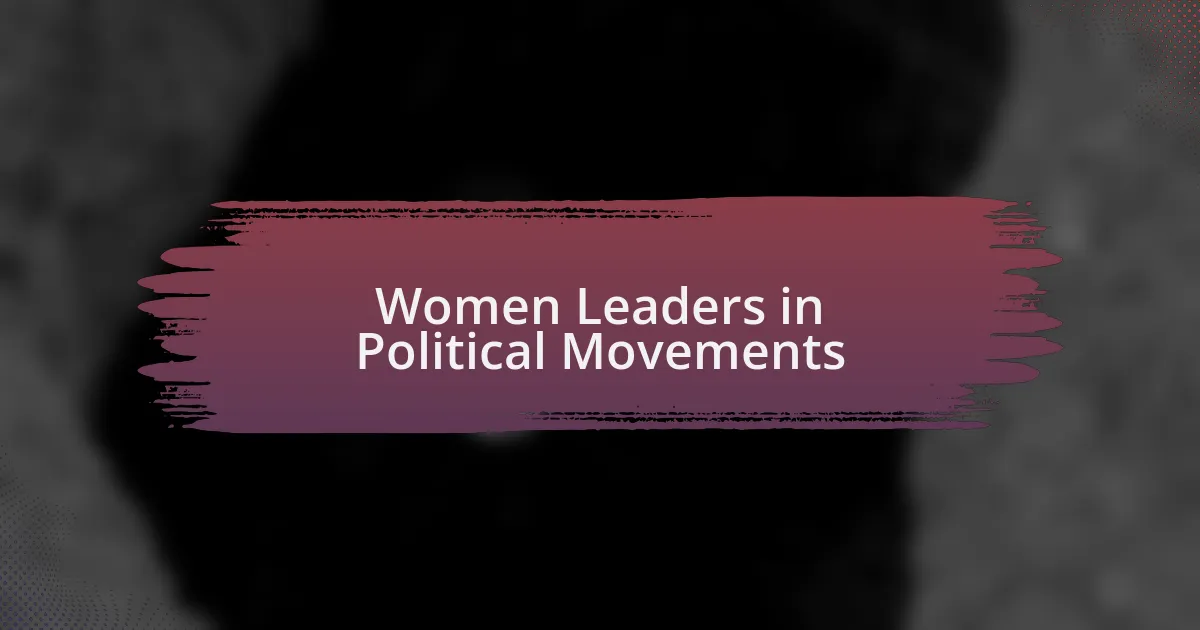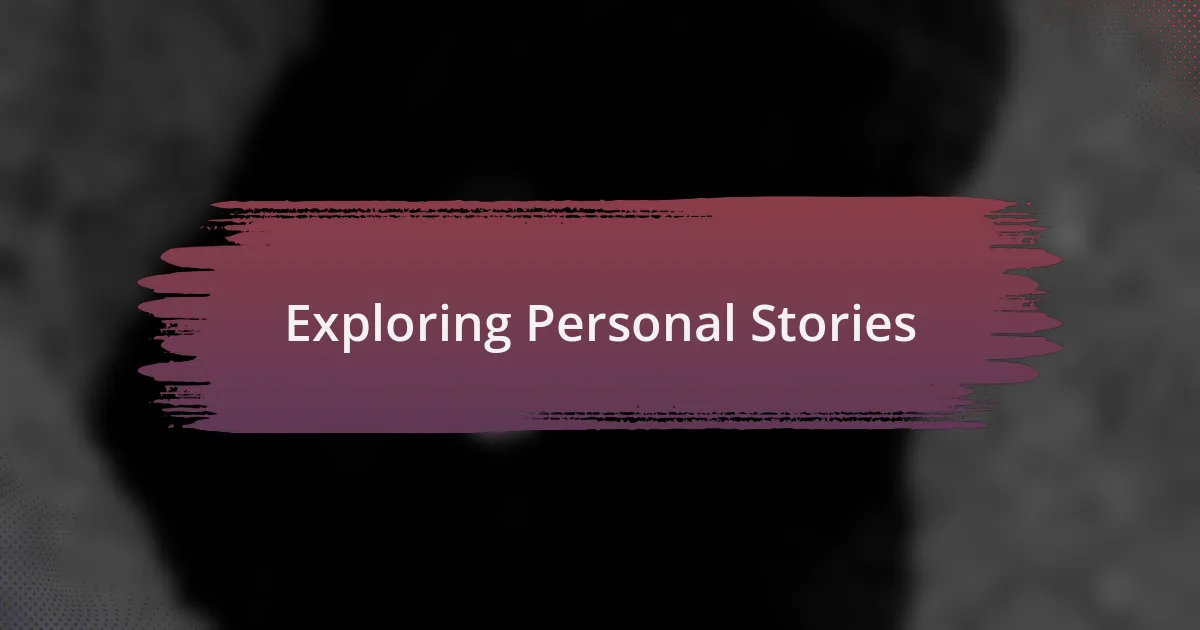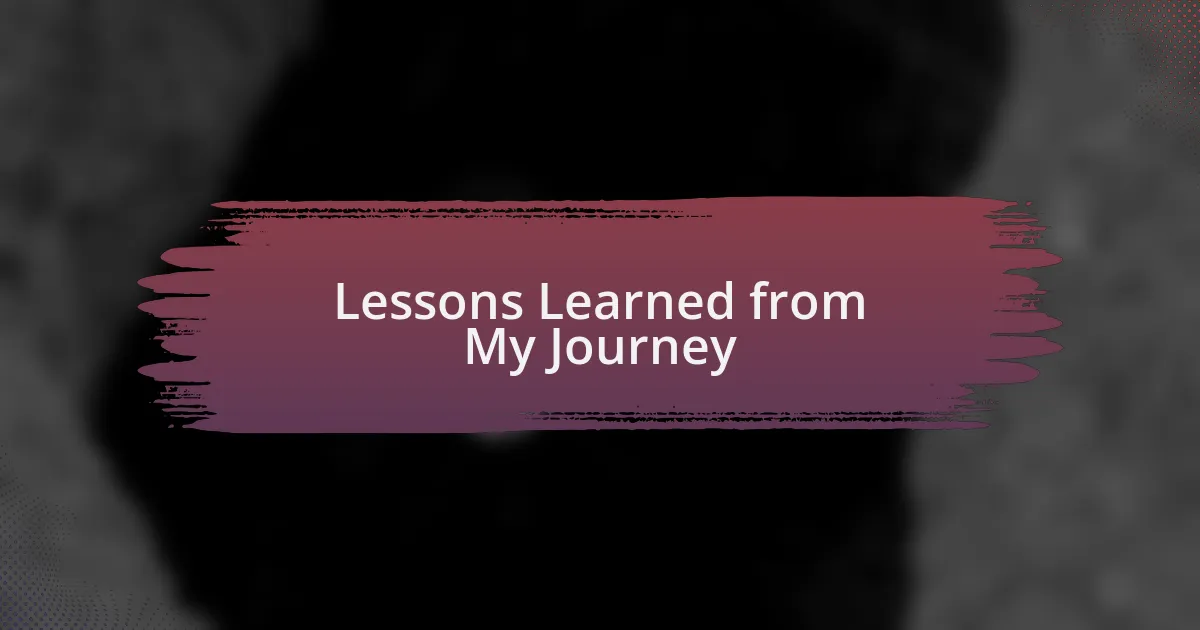Key takeaways:
- The Seneca Falls Convention of 1848 was a pivotal moment in the fight for women’s suffrage in the U.S., marking the first organized push for women’s rights.
- The ratification of the 19th Amendment in 1920 granted women the right to vote, symbolizing a significant shift in societal power dynamics.
- The Women’s Liberation Movement of the 1960s and 70s expanded the conversation around women’s rights, addressing workplace and reproductive rights, and continues to influence discussions today.
- Women leaders, such as Clara Zetkin and Harriet Tubman, have historically played crucial roles in advocating for social change, demonstrating the impact of individual contributions to broader movements.
Understanding Women’s Political Movements
Women’s political movements have played a crucial role in shaping society, yet they are often overshadowed by broader historical narratives. I remember the first time I stumbled upon the Seneca Falls Convention of 1848, realizing that those early voices of women were demanding rights that we often take for granted today. How could such impactful gatherings fade from mainstream discussions when they laid the groundwork for women’s suffrage?
Throughout history, women have mobilized in diverse ways to challenge systemic injustice and voice their unique perspectives. Personally, I was moved when I learned about the suffragists who marched despite facing violence and ridicule. It made me wonder: what sacrifices are today’s activists making as they push for equality in their own contexts?
Understanding women’s political movements means recognizing the intersectionality in their struggles. For example, the contributions of women of color in these movements are often overlooked. Reflecting on their experiences, I find myself questioning how we can amplify their voices in today’s discourse about equity and justice.

Importance of Archiving History
Archiving history is essential because it preserves the voices and experiences of those who have been marginalized. I recall visiting a local archive and discovering letters written by women during the suffrage movement. Reading their raw emotions and fierce determination made me realize that without such records, their struggles might have been forgotten, and similar injustice could repeat itself.
When we archive history, we create a treasure trove of narratives that inspire future generations. I often wonder how many young activists today feel empowered by knowing they are part of a long lineage of fighters for equality. If we don’t document these contributions, how will they recognize the weight of their own endeavors in the ongoing struggle for justice?
Moreover, preserving historical documents helps us understand the evolution of societal roles. Reflecting on the evolution of women’s rights through archived materials has deepened my appreciation for the endless cycle of resilience and advocacy. Isn’t it fascinating how each generation builds upon the efforts of those before them? Archiving not only informs us, but it also connects us to a collective legacy that continues to shape our political landscape.
Key Events in Women’s History
Key events in women’s history serve as pivotal moments that reflect the ongoing struggle for rights and equality. One of the most significant events was the Seneca Falls Convention in 1848, which marked the first organized push for women’s suffrage in the United States. When I first learned about this gathering, I was struck by the bravery of those women who dared to voice their demands amid an indifferent society. Their Declaration of Sentiments cleverly mirrored the Declaration of Independence, showcasing their resolve to claim their rights. Can you imagine the courage it took to stand up when the odds seemed insurmountable?
In 1920, the ratification of the 19th Amendment was another milestone, granting women the right to vote in the U.S. This event resonates with me because it symbolizes a shift in power dynamics and recognition of women’s voices in democracy. Reflecting on how many women fought tirelessly for this right, I often think about my own voting experiences and how crucial that act feels. It makes me wonder, what would our world look like if those women had not taken a stand?
Another remarkable moment was the Women’s Liberation Movement of the 1960s and 70s, which pushed boundaries in various aspects of society, from workplace rights to reproductive rights. I remember reading about the protests and marches that took place, feeling a deep sense of connection to those who fought against deeply ingrained societal norms. Their passion ignited discussions that still influence us today, making me question how relevant these struggles remain in current conversations about equality. How often do we acknowledge the foundations laid by those fearless women? Their legacies remind me that the fight for women’s rights is ongoing, prompting us to continue advocating for change.

Women Leaders in Political Movements
Women have historically played crucial roles in political movements, often leading the charge for change even when their voices were marginalized. For instance, take Clara Zetkin, a German activist who championed women’s rights and initiated International Women’s Day in 1910. I remember the first time I discovered her story; it struck me how one woman’s vision could influence a global movement, encouraging me to reflect on how our individual aspirations can shape broader societal shifts. What would our world look like if more women like Zetkin were celebrated for their leadership?
Similarly, I can’t help but admire the indomitable spirit of Harriet Tubman, whose courage made her a leader in the Underground Railroad. She didn’t just lead others to freedom; she became a symbol of resilience and tenacity. When I think of her journey, I feel an overwhelming sense of gratitude for the sacrifices she made and the lives she saved. How often do we take a moment to honor those who risked everything for justice?
The suffragettes, too, displayed extraordinary leadership. Figures like Emmeline Pankhurst in the UK were fearless in their fight for women’s voting rights, employing tactics that ranged from peaceful protests to hunger strikes. This can be quite relatable; I often find myself in discussions about the lengths people will go to achieve their goals. It makes me wonder: in today’s political landscape, are we as passionate about advocacy? Their undeniable commitment serves as a powerful reminder that progress requires bold leadership—something we should all aspire to in our own pursuits for equality.

Exploring Personal Stories
Throughout my journey, I’ve come across countless personal stories that illuminate the struggles and triumphs of women in history. One that particularly resonates with me is the tale of Sojourner Truth. Listening to her famous “Ain’t I a Woman?” speech for the first time made me reconsider the intersections of race and gender in activism. I felt a stirring within me as I realized her powerful words still echo today—how far have we really come since then?
Another figure that has had a lasting impact on how I view women’s roles in political movements is Malala Yousafzai. When I read about her fight for girls’ education, it struck me as an extraordinary act of bravery. I remember thinking about my own experiences with education, how I often took it for granted. Her story reminded me of the challenges that many still face around the world and kindled a fire within me to advocate for change in my community. Are we doing enough to ensure that every girl has access to education?
As I delve deeper into these personal narratives, I find myself reflecting on the women in my own life who have shaped my understanding of advocacy. My grandmother, for instance, was a modest yet tenacious community organizer. Her efforts may not be widely known, but the lessons she imparted about standing up for what is right stay with me. How many hidden stories like hers remain untold? Engaging with these personal histories makes me appreciate that every story contributes to the broader narrative of women’s influence in political movements.
Researching Women’s Contributions
When I embarked on my research into women’s contributions, I was astounded by the sheer volume of information available yet equally overwhelmed. One particular resource I stumbled upon was a collection of letters written by suffragists. Reading their correspondence allowed me to witness their passion and determination in real time. I couldn’t help but wonder—how did they maintain hope in such challenging times?
Diving into archival records opened a window to the past for me. In one of the documents, I found an entry illustrating how women organized to support World War II efforts on the home front, taking on roles that transformed societal norms. I felt an immense pride wash over me, thinking about the resilience these women displayed. But it left me pondering: how often do we acknowledge their sacrifices in our current dialogues about gender equality?
As I continued my exploration, interviews with historians shed light on lesser-known figures who played pivotal roles in movements. One story that particularly struck me was about a woman orchestrating grassroots efforts during the Civil Rights Movement. Her efforts were often overshadowed, yet her impact was profound. It inspires me to ask: what other hidden narratives are waiting to be uncovered, and how can we bring them to the forefront?

Lessons Learned from My Journey
Lessons Learned from My Journey
One of the biggest revelations in my journey was recognizing the deep interconnectedness of women’s struggles across different eras. As I learned about women in various movements, I often found myself resonating with their challenges and triumphs. It made me realize that while specific contexts may differ, the essence of resilience and advocacy remains timeless. How can we not honor their legacies by continuing the fight for equality today?
Additionally, I discovered the importance of storytelling in preserving women’s history. I vividly remember interviewing an elderly woman who had been a part of the feminist movement in the 1970s. She spoke passionately about her experiences, infusing her recounting with emotion that brought her history to life. Engaging with her not only enriched my understanding but made me ponder: how can we ensure these stories are passed on, so future generations understand the depth of these experiences?
Through my exploration, I learned that advocacy doesn’t always have to be loud or public. Sometimes, it’s the quiet, persistent contributions that are most impactful. I think back to the women organizing behind closed doors, each small act adding up to create monumental change. This insight has led me to question: how can we all contribute in our own unique ways to amplify these voices and histories?